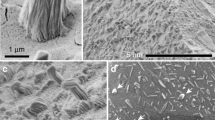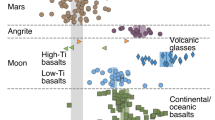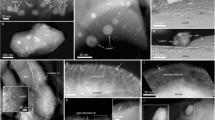Abstract
THE main point developed by Dr. Tilles is that even though tritium is occasionally absent in some iron meteorites, it is present in others, but still in lower than expected quantities. This observation is used by him to preclude the possibility that tritium decays with an abnormally short half-life in metallic iron. He goes on to explain his preferred hypothesis that the low concentration of tritium in iron meteorites is due to losses by diffusion after the meteorites have reached the Earth. The small quantitiesof tritium found, even after many years, are attributed to the fact that the proposed fast diffusion loss occurs only in one of the forms of iron making up the meteorites. In his opinion, the tritium which is still found in some iron meteorites after several years is that concentrated in the tsenite phase.
This is a preview of subscription content, access via your institution
Access options
Subscribe to this journal
Receive 51 print issues and online access
$199.00 per year
only $3.90 per issue
Buy this article
- Purchase on Springer Link
- Instant access to full article PDF
Prices may be subject to local taxes which are calculated during checkout
Similar content being viewed by others
References
Bainbridge, A. E., Suess, H. E., and Wänke, H., Geochim. Cosmochim. Acta, 26, 471 (1962).
Sykes, C., Burton, H. H., and Gegg, C. C., J. Iron Steel Inst., 156, 155 (1947).
Author information
Authors and Affiliations
Rights and permissions
About this article
Cite this article
TAMERS, M. Tritium Retention in Iron Meteorites. Nature 200, 564–565 (1963). https://doi.org/10.1038/200564a0
Issue Date:
DOI: https://doi.org/10.1038/200564a0
This article is cited by
-
Mystery of meteoritic fusion
Nature (1989)
-
Meteoritic Tritium and Diffusion in ?- and ?-Iron
Nature (1964)
Comments
By submitting a comment you agree to abide by our Terms and Community Guidelines. If you find something abusive or that does not comply with our terms or guidelines please flag it as inappropriate.



